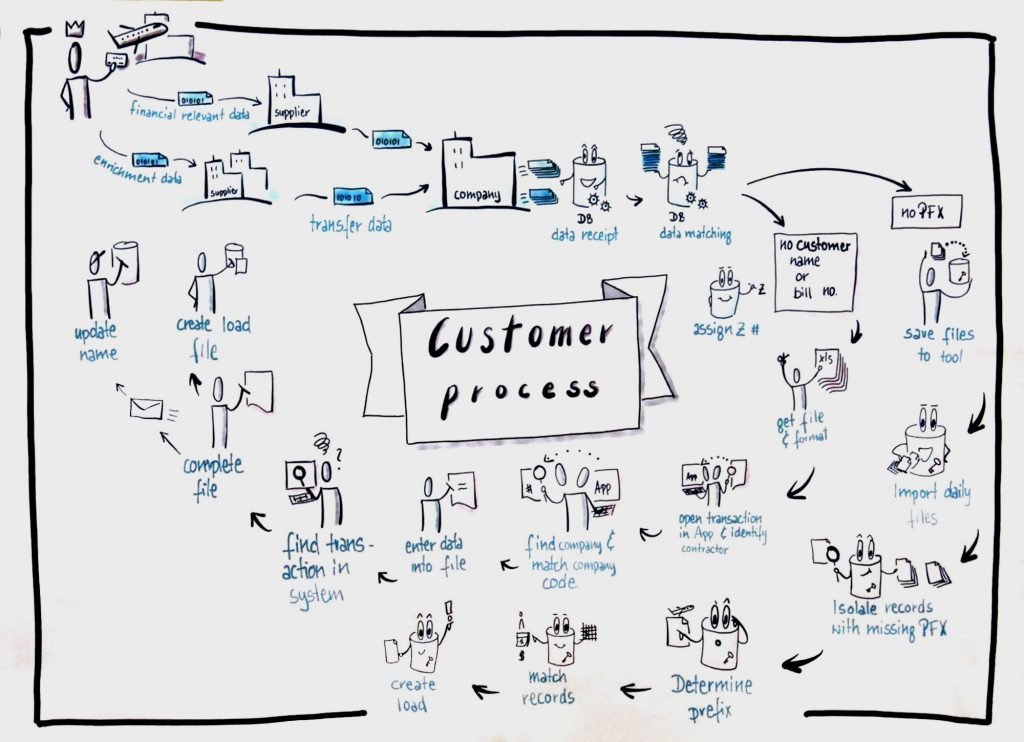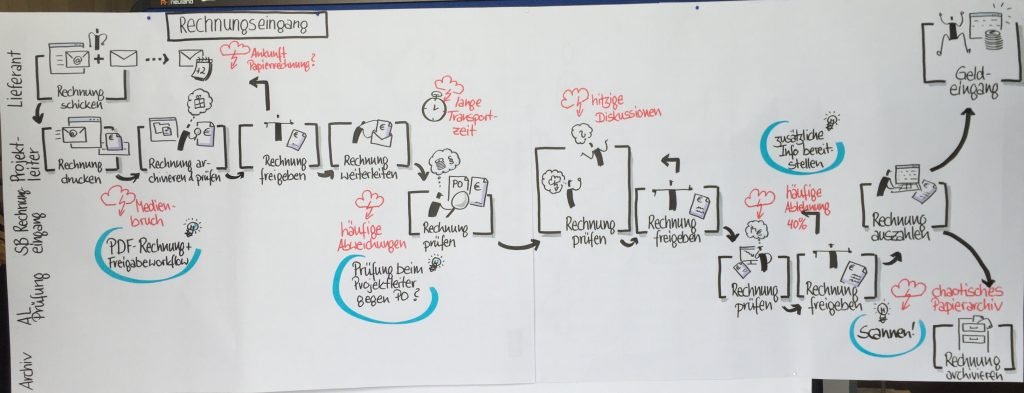Visual Process Mapping: Rethinking Workflows with a Pen
Courtesy of: Martin Haussmann, bikablo
Organizations often need to understand, analyze and improve their processes. Different departments must then form a common picture in process optimization workshops: Where does our process begin and where does it end? What are secondary processes and interfaces? How deep do we have to go into the details? In this post, bikablo explores how to find a common language for this.
"What do these boxes and arrows have to do with me?"
There are established techniques, codes and presentation forms for process documentation. They work for process experts, e.g. Lean Six Sigma consultants. For everyone else who has the knowledge for change inside them, such diagrams are often an incomprehensible "visual foreign language". They lack emotion, dynamics and clarity. And they are created on the computer, not in dialogue.
Data flow diagrams are exact, but not very descriptive. Anyone who has not mastered this secret language will be at a loss.
In the process workshop, it is crucial that everyone involved opens up and shares their daily experiences. However, crucial information is often only exchanged behind closed doors during coffee breaks. Even those who did not participate in the workshop later find it difficult to understand and identify with a digitally created process map. No one has the desire to look at it closely and think about it further, "What do these boxes and arrows have to do with me?"
How do you encourage stakeholders to participate and be creative?
According to neurobiologist Gerald Hüther, logical thinking alone is not enough to understand complex relationships and make wise decisions. We need a unity of thinking, feeling and acting; rationality and emotionality; spirit, soul and body. "There is no problem that can't be helped with a picture," says visualization author Dan Roam ("Explained on a Napkin"). And so, at bikablo, we have developed techniques, methodological approaches, and a visual vocabulary that makes designing workflows an exciting, joyful, creative, and insightful learning journey - with pen in hand, of course!
Interested in participating in a Visual Process Mapping course? I will be rolling this training out in the Fall of 2022. If you are interested, please send me an email at jill@jilllanger.com and I’ll let you know the details once they are finalized.




